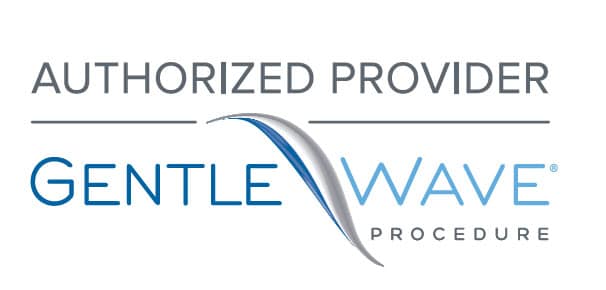Small Holes + Dead Bugs = Healthy Teeth
(That’s what we do…simply stated.) Put another way: Preserve the healthy tooth structure and keep it strong. Kill the bacteria that cause endodontic infections prior to treatment completion, and infections cease to arise.
External Anatomy of Access Techniques
Minimally Invasive Access: Micromechanical
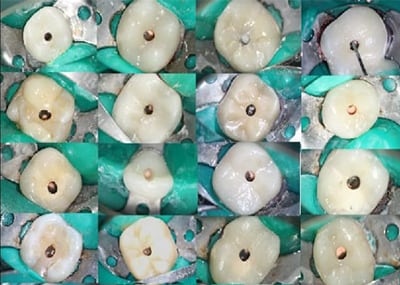
(Our accesses)
Straight Line Access: Standard Approach
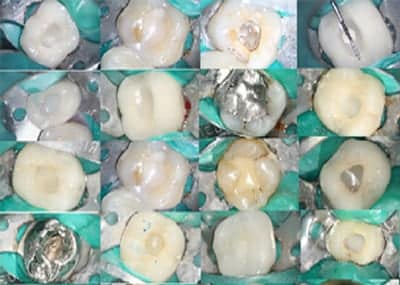
Internal Anatomy of Access Techniques
Minimally Invasive Accesses
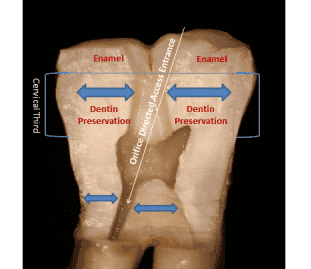
(Our accesses)
- Preserves more of your natural tooth structure
(See blue arrows above) - Increased resistance to fracture
- Increased longevity of your own tooth
(See below) - Increased treatment time
- Eliminates need for prosthetics such as implants and bridges
- Maintains your natural chewing function
- Eliminates need for new crown and additional costs
- Unrivaled post-operative esthetics following placement of the permanent core or post/ core access restoration
Straight Line Accesses
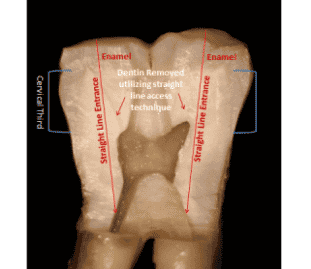
- Increased removal of your natural tooth structure (See above: Tooth structure between vertical red lines is lost)
- Decreased resistance to root fracture
- Decreased longevity of your own tooth
- Increased need for prosthetics such as implant or bridges and additional costs
- Decreased treatment times
- Increased need for new crowns and additional costs
- Diminished post-operative esthetics following permanent access restoration (See above and below)
Relative literature:
- Reduction in tooth stiffness as a result of endodontic and restorative procedures
- Impacts of Conservative Endodontic Cavity on Root Canal Instrumentation Efficacy and Resistance to Fracture Assessed in Incisors, Premolars, and Molars
- Minimally invasive endodontics: Challenging prevailing paradigms
Post-Operative Esthetic Results

(Our accesses)
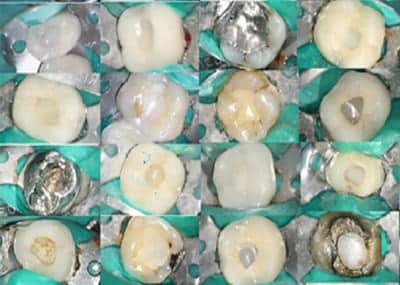
Microbiological Treatment Philosophy
Our Microbiological Protocol and Why It’s Good for You:
- Necrotic/ dead teeth no longer possess the blood vessels and lymph necessary for bacterial elimination and healing
- Interim medicament placement facilitates the elimination of bacteria within the microscopic tubules present in tooth structure
- Augments your immune system response, allowing it to eliminate the bacteria and inflammation present in the surrounding bone
- Reduces bio burden and stress on your overall immune system
- Decreased use of systemic oral antibiotics and increased efficacy of antibiotic therapy when needed
- Facilitates predicable treatment outcomes
- Bone healing, elimination of swelling, pain and pus is verified prior to treatment completion
- Reduces need for additional expensive and avoidable procedures such as root end surgery, implant or bridge therapy
- Protocol derived my masters research on bacterial penetration of tooth structure
Relative literature:
- The effects of surgical exposures of dental pulps in germ-free and conventional laboratory rats
- Persistent, recurrent, and acquired infection of the root canal system post-treatment
- Comprehensive Analysis of Secondary Dental Root Canal Infections: A Combination of Culture and Culture-Independent Approaches Reveals New Insights
- The evolving new understanding of endodontic infections


 We Offer Laser Enhanced Root Canals with Increased Success Rate!
We Offer Laser Enhanced Root Canals with Increased Success Rate!